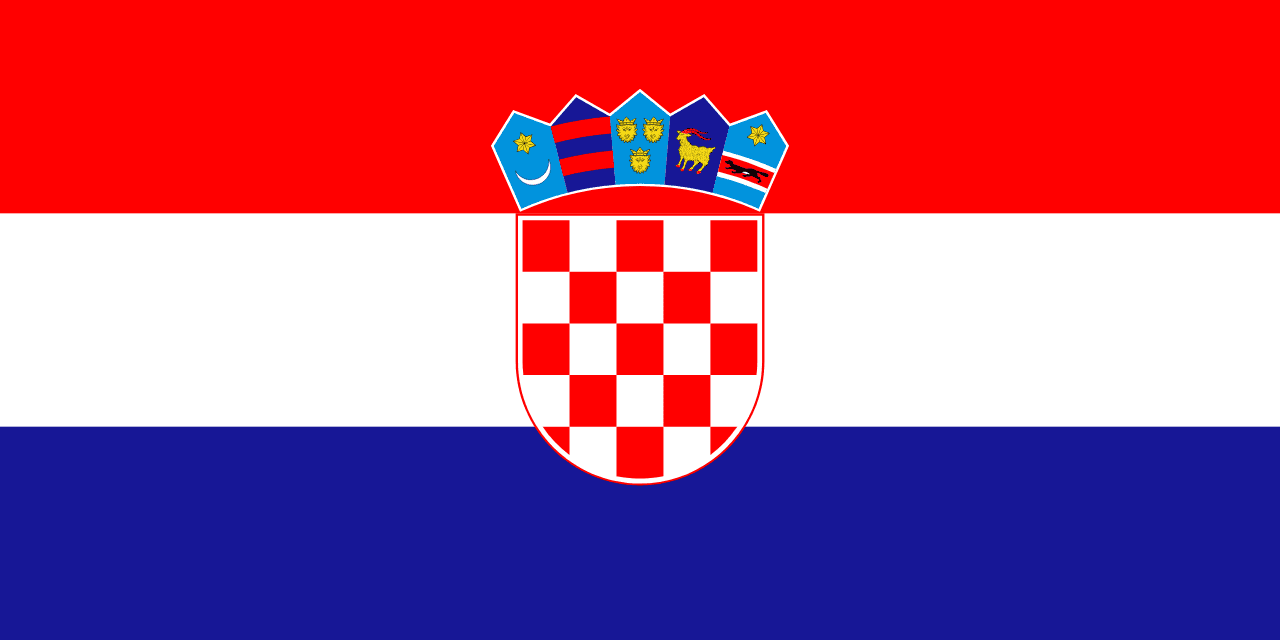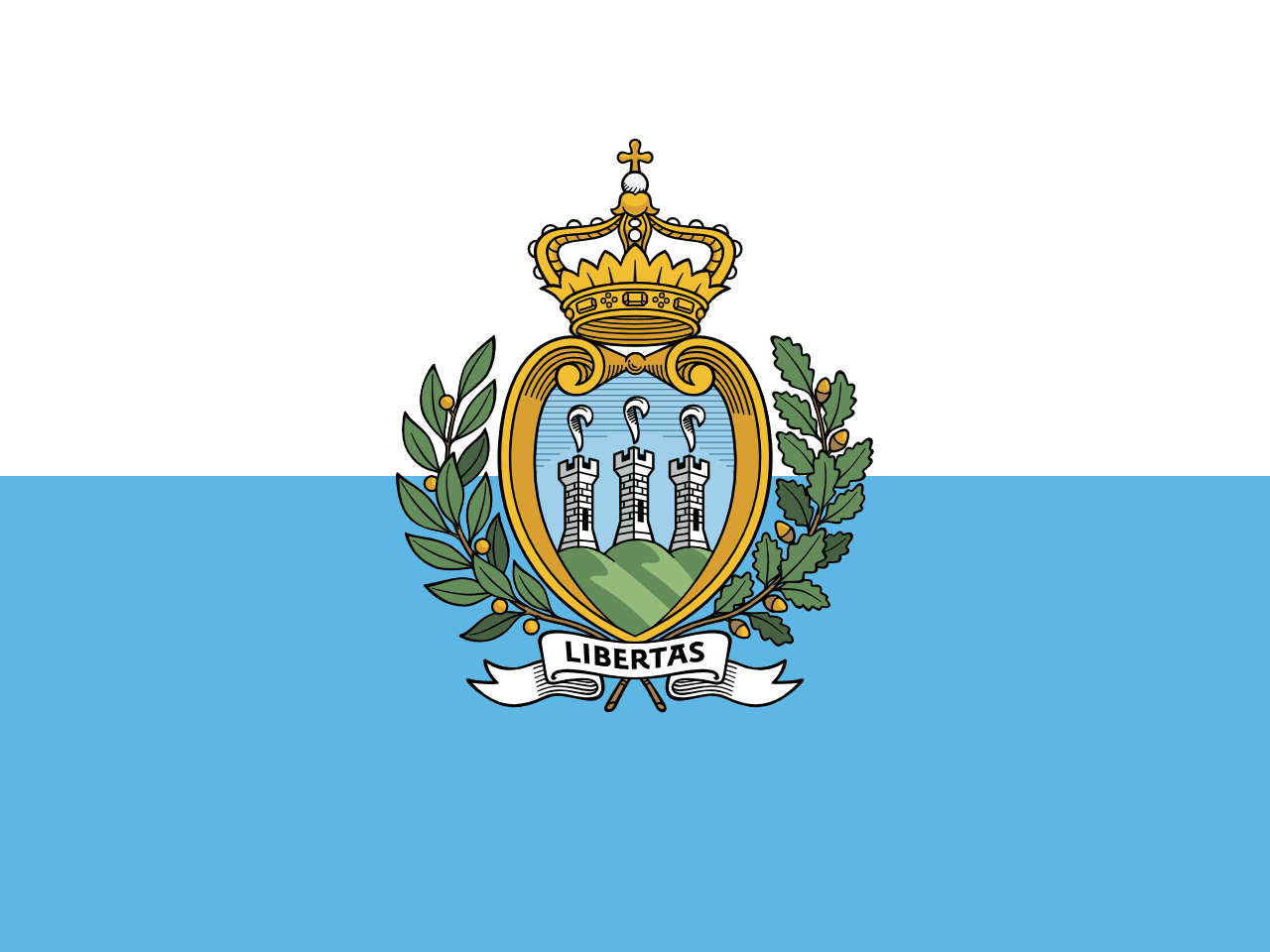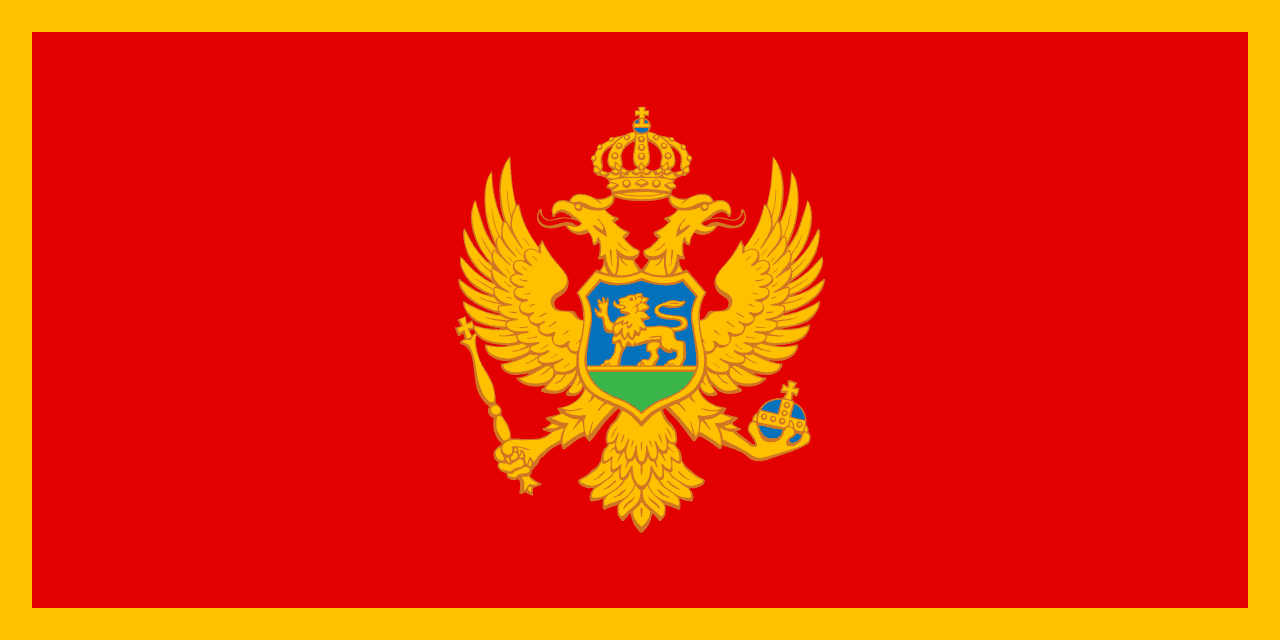Croatia Flag Meaning
Three horizontal stripes of red, white, and blue with the Croatian coat of arms centered on the white stripe, featuring the distinctive red and white checkerboard pattern and five historical shields representing the regions of Croatia.
- Continent
- Europe
- Adopted
- 1990
- Ratio
- 1:2
- Colors
- red, white, blue
- Designer
- Miroslav Šutej

Symbolism
Red Stripe: Represents the blood shed by Croatian heroes throughout history in defense of the homeland, symbolizing courage, strength, and the sacrifices made during centuries of struggle for independence and national survival.
White Stripe: Represents peace, nobility, and the pure intentions of the Croatian people, symbolizing the desire for harmony and the honest character that defines Croatian culture and aspirations for the future.
Blue Stripe: Represents devotion, faithfulness, and loyalty to the Croatian homeland, symbolizing the steadfast spirit of the Croatian people and their connection to the Adriatic Sea that borders much of the country.
Red and White Checkerboard (Šahovnica): The iconic Croatian coat of arms represents the ancient Kingdom of Croatia and Croatian identity, with the alternating red and white squares being one of the world's oldest national symbols, dating back over 1,000 years.
Five Historical Shields: Represent the five historical regions of Croatia: an ancient Croatian crown, a blue-red-silver shield (Republic of Dubrovnik), three golden lion heads on blue (Dalmatia), a red stripe on silver (Istria), and a six-pointed star over crescent moon (Slavonia).
History
- 7th Century: Slavic tribes, ancestors of modern Croatians, settled in the region, gradually establishing tribal confederations and early medieval states that would form the basis of Croatian identity and territorial claims.
- 925-1102: The medieval Kingdom of Croatia was established under King Tomislav, with the red and white checkerboard coat of arms first appearing as a symbol of Croatian royal authority and national identity.
- 1102-1918: Croatia entered personal union with Hungary and later became part of the Austro-Hungarian Empire, maintaining autonomy and cultural identity while using various Habsburg symbols alongside Croatian heraldic traditions.
- 1918-1941: Croatia joined the Kingdom of Yugoslavia, using Yugoslav royal symbols while Croatian national identity persisted, with tensions growing between centralist policies and Croatian autonomist aspirations.
- 1941-1945: The Independent State of Croatia was established as a Nazi puppet state, using Croatian symbols alongside fascist imagery, while Partisan resistance movements also employed Croatian national symbols.
- 1945-1990: Socialist Yugoslavia suppressed Croatian national symbols, using red star and socialist emblems, though Croatian cultural identity remained strong throughout the communist period despite political restrictions.
- May 30, 1990: Croatia adopted the current flag following democratic elections, restoring the historical coat of arms and tricolor as symbols of renewed Croatian independence and democratic transformation.
- June 25, 1991: Croatia declared independence from Yugoslavia, with the flag representing the new sovereign state during the Croatian War of Independence that followed.
- 1995-Present: Croatia achieved full territorial integrity and has developed into a stable democracy, joining NATO in 2009 and the European Union in 2013 while maintaining its distinctive national symbols.
Trivia
- Croatia's red and white checkerboard coat of arms (šahovnica) is one of the world's oldest national symbols, with origins dating back over 1,000 years to the medieval Croatian kingdom.
- The flag represents a country with over 1,000 islands along the Adriatic coast, making it one of Europe's most island-rich nations with stunning coastal scenery.
- Croatia is home to eight UNESCO World Heritage Sites, including Dubrovnik's medieval walls, Plitvice Lakes National Park, and the historic city of Split with Diocletian's Palace.
- The necktie (cravat) originated in Croatia, worn by Croatian soldiers in the 17th century and later adopted by French fashion, giving the world this essential item of formal wear.
- Croatia has produced numerous world-class athletes, particularly in tennis (Goran Ivanišević, Marin Čilić), football (Luka Modrić), and basketball, achieving remarkable success for its size.
- The flag flies over a country where the Dalmatian dog breed originated, named after the historical region of Dalmatia along the Adriatic coast.
- Plitvice Lakes National Park features 16 terraced lakes connected by waterfalls, creating one of Europe's most spectacular natural attractions and a popular filming location.
- Croatia's coastline stretches over 1,700 kilometers and includes some of Europe's clearest waters, making it a premier destination for sailing, swimming, and water sports.
- The country has a rich wine-making tradition dating back to ancient times, with indigenous grape varieties producing unique wines in regions like Istria and Dalmatia.
- Zagreb, the capital, features one of Europe's most beautiful upper towns with medieval architecture, while the coastal city of Split was built around a Roman emperor's palace.
- Croatia gained independence through the Croatian War of Independence (1991-1995), which resulted in significant destruction but ultimately established Croatian sovereignty.
- The flag represents a country known for its summer festivals, including the Ultra Europe music festival and various cultural events in historic coastal cities.
- Croatian cuisine varies by region, with inland areas featuring Central European influences while the coast offers Mediterranean dishes with fresh seafood and olive oil.
- The country has successfully transitioned from socialism to capitalism and EU membership, becoming a model for post-communist democratic and economic transformation.
- Croatia's football team reached the World Cup final in 2018, their greatest sporting achievement that brought international attention to this nation of 4 million people.
Related Countries

Slovenia
Europe
A horizontal tricolor of white, blue, and red with the Slovenian coat of arms placed toward the hoist in the upper stripe. The coat of arms features Mount Triglav, Slovenia’s highest peak, three six-pointed golden stars, and wavy blue lines representing rivers and the Adriatic Sea.

San Marino
Europe
White and light blue horizontal bicolor with coat of arms featuring three towers representing the ancient fortress republic on Mount Titano.

Austria
Europe
Three horizontal stripes of red, white, and red, representing one of the world's oldest national flag designs, allegedly inspired by Duke Leopold V's blood-stained white surcoat after the Battle of Acre in 1191, and symbolizing the courage, honesty, and strength of the Austrian people.

Hungary
Europe
Three horizontal stripes of red, white, and green representing strength, faithfulness, and hope, with colors rooted in medieval Hungarian heraldry and the struggle for independence from foreign rule.

Italy
Europe
Three equal vertical stripes of green, white, and red, known as 'Il Tricolore,' representing the Italian Republic and embodying the values of hope, faith, and charity that unite the Italian peninsula.

Montenegro
Europe
A red field with golden border and the coat of arms featuring a golden double-headed eagle, representing Montenegro's medieval heritage, Orthodox Christian identity, and recent independence from Serbia.